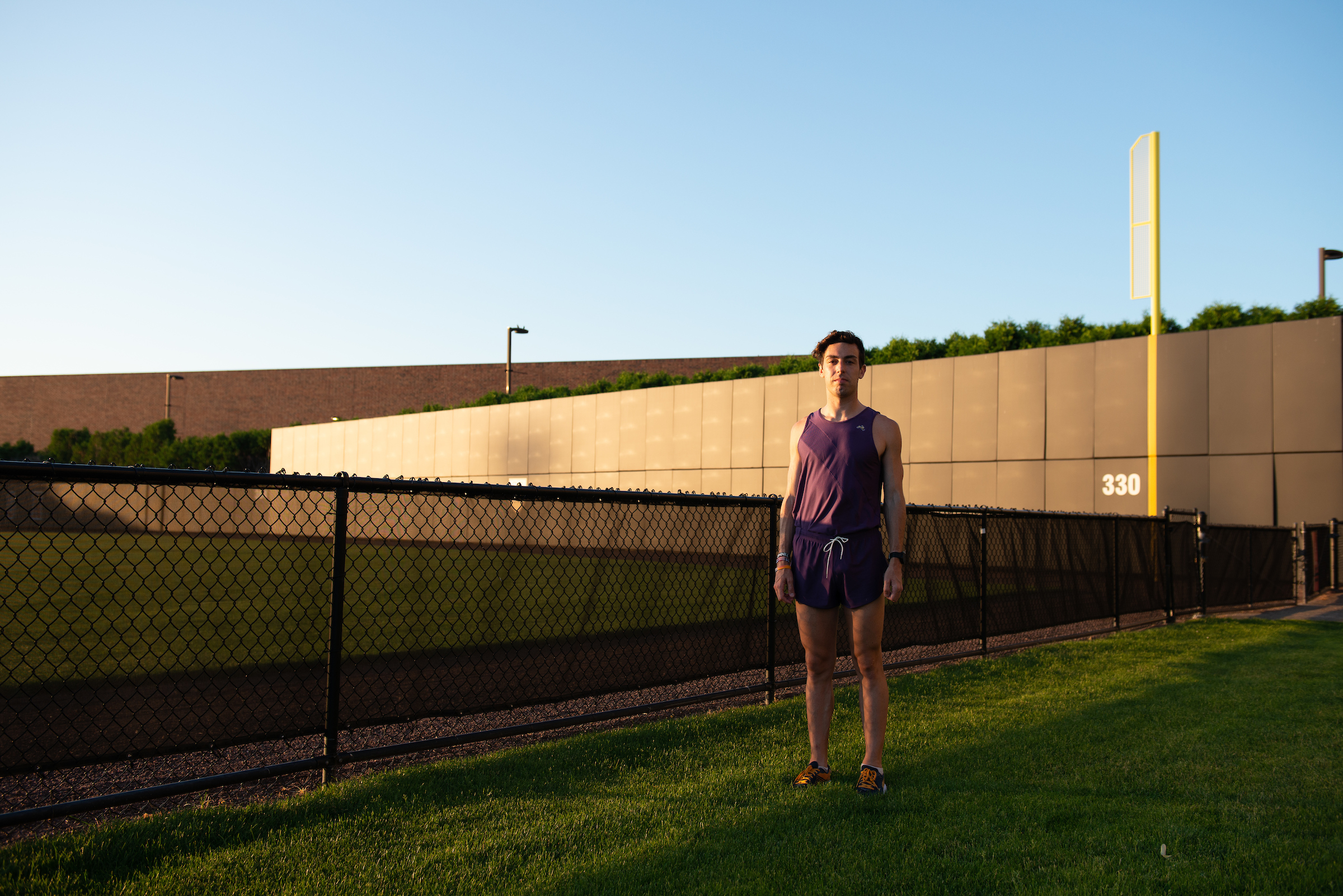
THE LOOP
Words by David Melly
Photographs by Molly Malone
“My coach wheeled it – it’s 1180.”
“It’s 1200 if you run the turns wide.”
“It’s 4 seconds faster than a track.”
Every distance runner in Boston has their own theory on how long “the Tempo Loop” is. One of the two Strava segments marking the loop is defiantly titled “It’s 1200 meters,” as if the segment itself is trying to jump in on the debate. The four-sided road loop running through the Harvard University athletic complex is centrally located, sheltered from wind, and somewhere in the range of 3/4 of a mile, making it the perfect spot for distance runners of all ages and abilities to run tempos, interval workouts, and, most recently, time trials.
Since the advent of the GPS watch – and well before – runners have found ways to split hairs over distance. Runners, by nature, seek precision: we measure our mettle using endless combinations of seconds and meters. Anyone who ran cross-country in high school is familiar with the process of rating a 5k course. A sloppily-measured one may be 30 seconds fast; a hilly mud pit may be 45 seconds slow. We agonize over the details, ostensibly to find some sort of objective truth, but really we just want to compare to our past selves, justify a poor showing, or underscore an impressive one.
Prevailing wisdom on the Harvard tempo loop is that the combination of gentle turns, pancake-flat surfaces, and a little satellite interference when hugging the football stadium causes most watches to split miles about 5 seconds faster than a track when running a moderate workout pace. Many in the Boston Hare AC squad, myself included, made the best of pandemic conditions by running a virtual race series on the Tempo Loop to test just how favorable conditions were, and we were not disappointed. 3 of the 4 time trials I completed resulted in a personal best time, although I wouldn’t be caught dead referring to any of those marks as my “PR.” During the fourth, a mile, my teammate Patrick Gregory set the loop’s record at a blazing 2:56 en route to a 4:02 road mile. The lore of the Tempo Loop is such that the virtual race organizers received complaints that our Strava-verified results were suspect from observers living several states away.

Under normal conditions, the Tempo Loop is just a convenient place to get in a workout. One mile into every rep, the discordant chorus of watches chiming a few meters apart may spark debates over whose watch is more accurate, how far past the end of an interval should one run for “honesty’s” sake, and whether we were actually running faster than the prescribed pace.
I’m a believer in the value of the “confidence booster” workout. It never feels good to fail. Our brains are simpler than we pretend, and learning to associate hard efforts with positive outcomes can have performance benefits as real and significant as pounding pavement. Much of the training prescribed by smart coaches follows this wisdom by design – better to end a workout feeling like you could keep going than like you left everything on the line and came up short.
Particularly as I’ve moved up in race distance, there are more unknowns than ever before. Weather, fueling, and field quality all add more uncertainty to a marathon than an indoor mile. Reducing the uncertainty of ability – quieting the nagging question of “can I do this?” – when venturing into the unknown of a race is some of the best mental armor that training can provide. And just as there is value to working out on the Newton hills in the rain to build toughness, there is value in working out on the Tempo Loop to build confidence.
But there’s a second, less obvious benefit that many runners have begun to forget as we move toward increasingly tech-fueled training. I was a late adopter of the Garmin lifestyle, but in the last year alone I find myself becoming increasingly dependent on the data fed to me by my watch as the defining measure of fitness. Suspiciously-quick Tempo Loop times undermine our perception of watches as objective, destroying the notion that we can accept any measurement, no matter how modern, as unquestioned reality. The irony of becoming a slave to your watch is that sometimes, the device itself is the strongest reminder of its own untrustworthiness.
The only thing you can really trust is your own body. Learning to listen to your body is a critical and formative part of being a successful runner, and sacrificing that aspect of training to technology is robbing yourself of one of your most valuable weapons on race day.

Fitness is fitness. No matter whether you’re running on a pristine rubber track or slogging through a muddy field, your performance will only be as good as your body allows. As much as we want to believe otherwise, there are no shortcuts in training – no supershoe, no supplement, no training hack can compare to showing up to the starting line fit as hell and ready to roll.
And I wouldn’t want it any other way. At the end of the day, running is beautifully simple. No matter who you are or what level you compete at, the goal is the same: to get to the finish line as fast as you can. There are many different paths and permutations of that pursuit, and that’s what keeps so many of us in the sport for life. But the value of running has never been in the numbers; it’s always been in the experience.
How long is the Tempo Loop? It doesn’t matter. No matter where you run, the recipe for success is the same – consistency, confidence, and perseverance.
